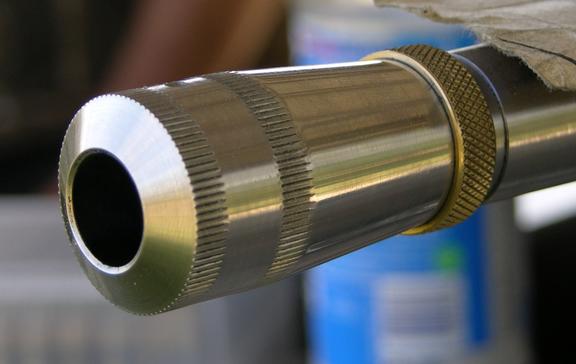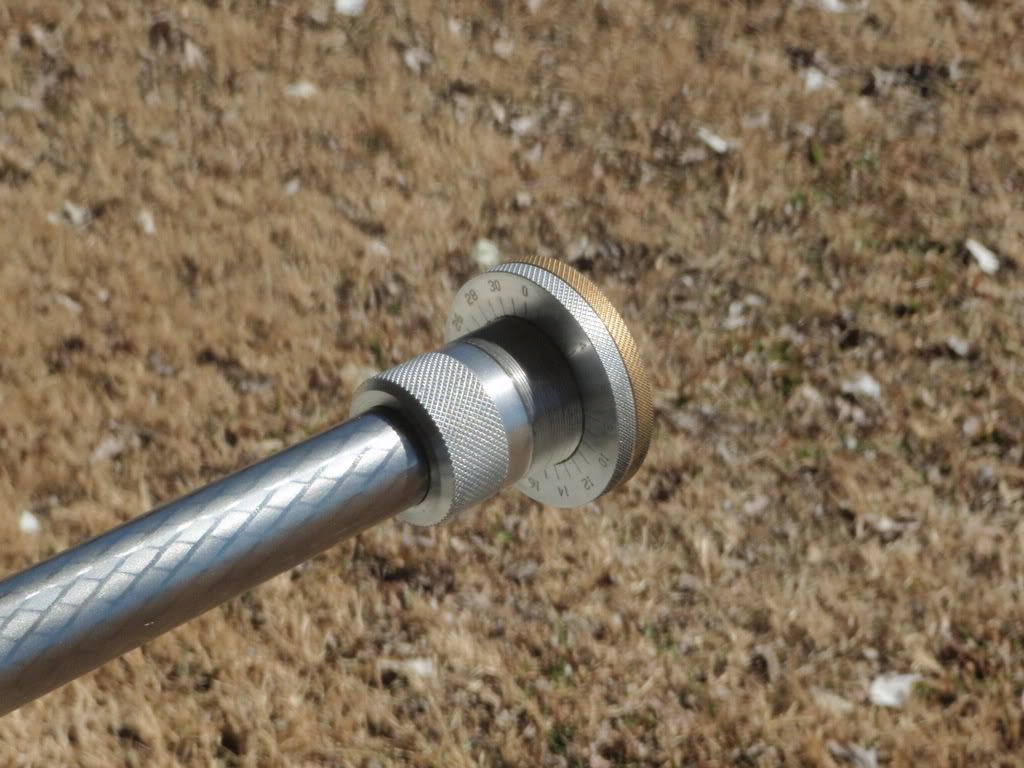A
AVanGorder
Guest
Let's see them "Tuners"
Here is the tuner Hal Drake made and installed on his HV 30BR.

Here is the tuner Hal Drake made and installed on his HV 30BR.



Rangerat its a shame Boyd took the time to post you off line but didn't post it here.As a SuperModerator one would think he has a certain immunity to the hostilty surrounding certain tuner types.
A standard everyday tuner will help you keep shooting small groups as the conditions change.It requires constant adjustment to keep things small.
The controversial tuner that nobody has anything good to say about doesn't need to be adjusted all day.The whole concept of how this tuner works is 3 months old on this forum.The standard twist all day tuner has been around forever and according to Mike Marcelli was invented by Mr Rose.
If your a Engineer here is how I see it.
When you send a signal down a piece of waveguide it is a wave.To get maximum pwer transfer you want the least amount of reflected or returned wves coming back at your outgoing signal.Voltage Standing Wave Ratio or VSWR.On a typical circuit like a typical bench gun we want a VSWR of 2 to 1 and we use tuning stubs on our waveguide to reduce the unwanted or reflected waves to improve our VSWR and get the best possible signal and maximum power transfer.
With the Bill Calfee type tuner that has gotten everyones panties in a wad we are looking not for a 1.5 VSWR but a 1.0 VSWR ratio so we don't have any of the nasty stuff hurting our signal.As he is arguably the best rimfire gunsmith in the world and he guns win everything using his muzzle devices it seems he has it pretty well dialed in.
The big rub comes in when people ask for a simple formula for tuning VSWR without ever looking at a stripline or waveguide.It as you know is for the most part trial and error done by a technician sitting at a bench all day looking at his analyzer or using his sliding short.
When he doesn't explain it as an engineer would he is criticised and then doesn't post for awhile extending the learning curve to those who are actually interested.
Lynn
Rangerat its a shame Boyd took the time to post you off line but didn't post it here.As a SuperModerator one would think he has a certain immunity to the hostilty surrounding certain tuner types.
A standard everyday tuner will help you keep shooting small groups as the conditions change.It requires constant adjustment to keep things small.
The controversial tuner that nobody has anything good to say about doesn't need to be adjusted all day.The whole concept of how this tuner works is 3 months old on this forum.The standard twist all day tuner has been around forever and according to Mike Marcelli was invented by Mr Rose.
If your a Engineer here is how I see it.
When you send a signal down a piece of waveguide it is a wave.To get maximum power transfer you want the least amount of reflected or returned waves coming back at your outgoing signal.Voltage Standing Wave Ratio or VSWR.On a typical circuit like a typical bench gun we want a VSWR of 2 to 1 and we use tuning stubs on our waveguide to reduce the unwanted or reflected waves to improve our VSWR and get the best possible signal and maximum power transfer.
With the Bill Calfee type tuner that has gotten everyones panties in a wad we are looking not for a 1.5 VSWR but a 1.0 VSWR ratio so we don't have any of the nasty stuff reflecting back and hurting our signal.As he is arguably the best rimfire gunsmith in the world and his guns win everything using his muzzle devices it seems he has it pretty well dialed in.
The big rub comes in when people ask for a simple formula for tuning VSWR without ever looking at a stripline or waveguide.It as you know is for the most part trial and error done by a technician sitting at a bench all day looking at his analyzer or using his sliding short and placing compacitive stubs along the path.
When he doesn't explain it as an engineer would he is criticised and then doesn't post for awhile extending the learning curve to those who are actually interested.
Lynn
